Health Effects of Excess Copper in the Body
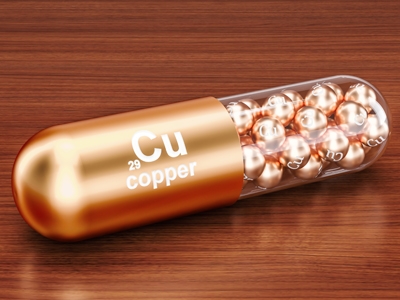
Copper is an essential trace mineral that is vitally important for both physical and mental health. It has been studied for years, including at government laboratories. However, its importance for health is still largely unappreciated. The following article is an introduction to the large subject of copper imbalance.
COPPER'S ROLE IN THE BODY
Copper has a number of important functions in the human body. The problem usually occurs when there is too much of it in the soft tissues of the body. Here are some of the important roles of copper:
Bones and connective tissue
Copper is required to fix calcium in the bones and to build and repair all bones and all connective tissue. Connective tissue means tendons, ligaments, skin, hair, nails, arteries, veins and a few other tissues.
Copper imbalance contributes to tooth decay, gum disease, bone spurs, weak bones, and almost all conditions of the skin, hair and nails. Others symptoms related to connective tissue include most cardiovascular problems, tendon and ligament conditions, scoliosis (curved or weak back), and other skeletal and structural imbalances as well.
Energy production in the cells
Copper is needed in the final steps of the Krebs energy cycle called the electron transport system. This is where most of our cellular energy is produced. Any problem here causes fatigue, depression and other low energy problems.
Immune Response
Too much copper makes you prone to infections of all kinds. The right copper compounds are the body’s natural yeast fighters! With a copper imbalance, it is difficult to avoid yeast and fungus infections. Common ones are sinus problems, ear problems, vaginal yeast and intestinal yeast that causes gas, bloating, stomach pain and other digestive problems.
Some antibiotics work by mobilizing copper. The trouble is they are also toxic. We find most often they are not needed if one eats correctly. There are natural germ killers that often work just as well.
The glandular system, particularly the thyroid and adrenal glands.
The thyroid gland is extremely sensitive to copper. Common conditions associated with copper imbalance include hypothyroidism and Hashimoto’s disease. These go away fairly easily on a properly designed nutritional balancing program. We find that taking thyroid hormones are not required in most causes.
Copper imbalance can be due to adrenal gland weakness. For details on the role of copper in adrenal exhaustion, please read Adrenal Burnout Syndrome.
Women’s and men’s reproductive system
Copper is needed for women's fertility and to maintain pregnancy. Copper imbalance is associated with many reproductive disorders such as premenstrual syndrome, ovarian cysts, uterine fibroid tumors, infertility, miscarriages, and many others. It is also involved in some testicular problems, erectile dysfunction, prostate enlargement and other male reproductive health conditions.
Nervous system
Copper stimulates production of the neurotransmitters epinephrine, norepinephrine and dopamine. It is also required for monoamine oxidase, an enzyme related to serotonin production.
As a result, copper is deeply involved with many disorders of the central nervous system. These include memory loss, especially in young people, depression, anxiety, attention deficit, hyperactivity, autism, bipolar disorder, schizophrenia, spaciness and others discussed later in this article.
THREE COPPER IMBALANCES
It is possible to be copper-deficient, copper-toxic and/or to have a condition called biounavailable copper.
Copper deficiency
Copper is found in certain foods in greater quantity such as meats, eggs, poultry, nuts, seeds and grains. Other foods are quite low in copper such as fruits. Others that tend to be low are vegetables and some nuts and grains.
Refined food diets are often low in copper. Also, some, especially children, need much more copper than others. This has to do mainly with their metabolic type or body chemistry. Fast oxidizers need more copper while slow oxidizers often have too much.
Copper excess
Zinc deficiency from any cause tends to cause a relative copper excess. Most people have a zinc deficiency due to low zinc in our food today, even organically grown food.
Other causes are vegetarian diets and the use of copper intrauterine devices and birth control pills. Cortisone therapy also can raise the tissue copper level.
Biounavailable copper
In this very common situation, copper is present in excess in the body, but it cannot be utilized well. The reason it occurs is that copper must be bound and transported within the body.
One type of biounavailability occurs due to a deficiency of the copper-binding proteins, ceruloplasmin or metallothionein. Without sufficient binding proteins, unbound copper circulates freely in the body, and it tends to accumulate primarily in the liver, brain and female organs.
Also, the forms or compounds of copper in the body may be incorrect. This is usually due to dietary problems.
When copper is biounavailable, one may have symptoms of both copper toxicity and copper deficiency.
Biounavailable copper is common in people who are in the state called slow oxidation. As stated earlier, copper deficiency occurs most often in people who are in the state called fast oxidation. This article uses the words copper imbalance when more than one of the three types of copper problems are possible.
SYMPTOMS OF COPPER IMBALANCE
Each mineral has "target organs" where it tends to build up. The places where copper accumulates are the liver first, then the brain and the reproductive organs. Copper may affect any organ or system of the body. However, it usually affects about four or five major systems of the body. These are the nervous system, the female and male reproductive system, connective tissues such as hair, skin and nails and organs like the liver. Let us discuss each of these in detail.
COPPER AND THE NERVOUS SYSTEM
Copper is called the "emotional mineral". The reason for this is that copper and imbalances related to it have such a profound impact on the central nervous system. The psychiatric implications of copper imbalance are tremendous, even if copper did not affect other body systems. We regularly work with every known psychological and psychiatric condition and most of these individuals improve when copper is balanced in the body.
The overall effect of copper appears to be to enhance all emotional states in a human being. Copper stimulates the diencephalons or old brain. Zinc is needed for the new brain or cortex. This brain is associated with the "higher emotions" such as reasoning, compassion and love. When an imbalance between these exists, the person tends to revert to the use of the old brain, also called the animal brain or emotional brain. This can lead to a tendency for every possible emotional condition affecting human beings.
Nervous system dysfunctions
We have seen improvement in 20 or 30 different mental and emotional conditions ranging from moderate to suicidal depression and anxiety to violence, obsessive-compulsive disorder, bipolar disorder, phobias, Tourette’s syndrome, depersonalization-derealization and schizophrenia. Others that respond amazingly well to balancing copper include epilepsy, ADD, ADHD, autism, delayed mental or emotional development and many others.
Panic attacks, migraines, spaciness, brain fog, mind racing, insomnia, nervousness, irritability and others also often involve copper.
Copper and world violence
Copper tends to enhance all the emotions, so violence can occur far more in those with copper excess – a common problem today in many parts of the world.
COPPER AND THE BLOOD
One of the most common symptoms of biounavailabe copper or a frank copper deficiency is an anemia that looks identical to iron deficiency anemia on standard blood tests. Those most affected are young adult women, and sometimes children. Vegetarians also tend to have too much biounavailable copper and may be affected.
Signs. It is usually a mild, microcytic, microchromic anemia.
Mechanism. Copper is required to change the form of iron from ferric to ferrous and back again, and is required to incorporate iron into hemoglobin. When copper is not available in sufficient amounts, usually due to adrenal insufficiency, iron is not incorporated into the hemoglobin well enough, resulting in a mild anemia.
Correction. Few doctors are aware of this cause for anemia. As a result, most physicians make the mistake of giving supplemental iron for this condition, which may work a little, but makes the patient much worse in terms of overall health. Iron can boost the adrenals and make copper a little more available, reducing the anemia. However, iron is irritating to the intestines and iron overload is very common today. For more on this, read Iron Overload on this website.
The correct approach is to balance copper metabolism with a complete nutritional balancing program. Then the anemia goes away by itself.
COPPER, INFECTIONS AND LOW ZINC
Copper imbalance is associated with viral, bacterial, fungal, parasitic and yeast infections. Prion disease also involves a copper imbalance. One reason for this is that copper antagonizes zinc, which is needed for the proper immune response.
COPPER, PARASITES AND YEAST INFECTIONS
Parasites are impeded and sometimes killed in the body by bioavailable copper. Copper is used in agriculture and some medications to kill parasites. When copper is out of balance, as it is in most people, parasitic infections are much more common. Until copper is brought into better balance using a nutritional balancing program, one may “cure” parasites with drugs or herbs, but they often come back, or are not completely eliminated.
Yeasts. Our bodies use copper to help control the growth of yeast. This may be because copper favors aerobic metabolism, the type of cellular metabolism that human beings should have. More specifically, copper, along with iron, is required for the electron transport system, where most of our cellular energy is produced.
In contrast, yeasts and fungi are anaerobic. This means they ferment sugars for their energy production. Thus, when copper is not available to the body in sufficient quantity, aerobic or normal oxygen-using metabolism is crippled to some degree, while anaerobic metabolism or the fermentation of sugars flourishes in such an environment.
For this reason, for example, copper sulfate is often sprayed on crops to kill yeast and fungus. Copper is also used in some swimming pools and hot tubs to control yeast and bacterial growth.
COPPER AND THE REPRODUCTIVE SYSTEM
Most reproductive system conditions have involve a copper imbalance. Women are often affected more than men because women generally have higher levels of copper in their bodies than men.
Common reproductive organ symptoms that usually involve a copper imbalance include premenstrual syndrome, amenorrhea, dysmenorrhea, infertility, miscarriages, uterine fibroid tumors, ovarian cysts, endometriosis, polycystic ovaries, pelvic inflammatory disease, fibrocystic breast disease, and post-orgasmic illness. Here is more detail about a few of these conditions.
Premenstrual syndrome. The symptoms of PMS mimic the symptoms of copper imbalance. This occurs because estrogen and copper levels in the body usually increase and decrease together. Both increase before the menstrual period. This is a key to correcting this condition.
Miscarriages and infertility. Adequate available copper is required to become pregnant and to hold onto a pregnancy. Studies indicate that women with low estrogen and often low copper have more miscarriages.
Low libido in men. Low sexual interest in men is also related to copper, which interferes with zinc metabolism in many instances. Men’s sperm and fluids are rich in zinc. If they become depleted, male fertility and male sexual performance will suffer.
Estrogen dominance and copper. Copper-toxic women are often estrogen dominant. This means they have more estrogen in their bodies, proportionately, than they have progesterone. A nutritional balancing program will correct this. We do not need or ever recommend hormone replacement or bi-identical hormone therapy. We find it increases cancer in the body, even if one is unaware of it.
Biounavailable copper, progesterone and body shape. Some women have a lower estrogen level. Their bodies are often more linear in shape and less “curvy”. Estrogen tends to produce a more curvy body.
Copper, however, is not the only factor affecting hormones. Some pesticides, for example, mimic the effects of estrogen and can affect the hormone balance.
Men and copper imbalance. We call zinc a 'masculine' element because it is required for the prostate gland and men’s bodies generally higher than women’s bodies in zinc, while women are higher in copper.
Among boys and men, symptoms related to excessive copper are growth and developmental delay, ADD, ADHD, autism, gender dysphoria and homosexuality. Others are prostate enlargement, prostate infections and prostate cancer. Others are erectile dysfunction or impotence, depression, anxiety, testicular pain and testicular cancer. Excessive copper is also associated with more violence in men and women.
Secondary sex characteristics and copper. Copper also plays an important role in secondary sex characteristics. These are aspects of sexuality that are more mental and emotional than they are physical or anatomical.
Birth control pills and copper IUDs (intra-uterine devices for birth control). These two birth control methods definitely affect copper metabolism in the body. While some women can handle them, others experience depression, anxiety, personality shifts and many horrible side effects from them, either acute or chronic.
This aspect of women’s “sexual revolution” has probably caused more disasters in women’s health than any other. Developing cancer, for example, can take years so women do not understand the dangers. The truth is, even if a woman quits taking the pill, for example, her risk of cancer remains higher her entire lifetime.
Excessive sexual desire in women. Another curious effect of copper excess in women can be excessive sexual interest. This has something to do with the estrogen level and liver toxicity due to the copper imbalance.
COPPER AND CONNECTIVE TISSUE
Copper is required for collagen formation. Excess copper or biounavailable copper causes connective tissue problems because excessive copper interferes with the disulfide bonds in connective tissue.
Copper and vitamin C. Copper and vitamin C are direct antagonists. This means that they oppose each other in the body. This is one reason many people feel better taking vitamin C.
Copper tends to oxidize and destroy vitamin C in the body. Meanwhile, vitamin C chelates or removes copper from the body. This requires a dose of vitamin C of at least about 500 mg daily, far higher than the minimum daily requirement of about 60 mg. Many readers know that vitamin C is critical for connective tissues. One of the prominent symptoms of scurvy, or vitamin C deficiency, is bleeding, such as bleeding gums. This is due to connective tissue weakness.
Thus, a copper excess can easily lead to a deficiency of vitamin C in the body and with it many symptoms of vitamin C deficiency. Oddly, however, a copper deficiency also causes connective tissue problems, especially in the heart and cardiovascular system where it is associated with a tendency for aneurisms and atherosclerosis.
Symptoms. Connective tissue symptoms associated with copper imbalance include arthritis, osteoporosis, stretch marks and joint problems of other kinds. Others include scoliosis, kyphosis (bad posture) and many of the conditions of the skin, hair and fingernails and toenails.
Others are some diseases of the muscles, ligaments and tendons. Still others are hair loss, especially in women, tendonitis, back problems due to muscle weakness, and others.
Copper imbalance is associated with artery and vein problems such as varicose veins, hemorrhoids, arteriosclerosis and atherosclerosis.
Unfortunately, Most Doctors Are Not Familiar with Copper Imbalance and The Way to Rebalance It.
COPPER AND ADDICTION
Addiction can be related to copper and the adrenals. The use of stimulant drugs, loud music, sex and even just exercise stimulates the adrenals. This helps keep copper available and makes one feel better. Without this stimulation, unbound copper builds up quickly in the body and one may feel fatigued, moody or depressed. These are common copper imbalance symptoms.
This can easily result in a compulsive or addictive need for some kind of adrenal stimulant such as more exercise, more caffeine or even cocaine. In other words, part of the appeal of cocaine, caffeine, amphetamines or other stimulants may be their ability to help lower copper temporarily by stimulating the adrenals.
Relation of cadmium to copper. Cadmium found in marijuana and cigarettes drives copper back into storage. Therefore, these drugs may also make a person feel better temporarily by affecting the copper balance.
ANOREXIA AND COPPER
Another common symptom is a lack of appetite or some degree of anorexia. Excessive copper tends to shut off the appetite, whereas zinc is required for the appestat mechanism in the brain. Zinc is also needed for an acute sense of taste and smell. The anorexia situation ends to be the worst in teenagers. For one thing, they are under more stress than younger children in many cases. Also, their diets are often low in quality proteins such as meats that are rich in zinc. Instead, they eat a lot of carbohydrates such as pizza that actually interfere with zinc uptake in the intestines. This combination can be lethal for some teenage girls, in particular.
COPPER AND CANCER
Copper imbalance impairs the immune system. Research is underway investigating the role of excess copper in tumor angiogenesis.
Cancer is associated with all three copper imbalances – deficiency, excess and biounavailable copper, which is a combination of the other two. This is one reason for the cancer epidemic we experience today. Here are just a few ways cancer is linked to copper imbalance:
1. The levels of estrogen and copper have a direct relationship. This means that as copper rises, often estrogen rises, too. This is one reason many women and even men are so-called “estrogen dominant” today. Really, they have too much copper and cannot detoxify estrogen well enough. This imbalance is tied to cancer because estrogen is a potent carcinogen. It is the reason we never recommend supplementing even natural estrogen unless it is done with extreme caution. It is rarely needed if the body chemistry can be balanced using nutritional balancing science.
2. Copper causes liver toxicity when it is in excess or when it biounavailable. The liver is important to protect to avoid and to control cancer in every case, according to Dr. Max Gerson, MD, a pioneer in non-toxic cancer therapies.
3. Copper alters thyroid gland activity in most cases. This can also contribute to cancer and many other illnesses such as Grave’s disease, for example.
4. Copper imbalance is associated with fungal and other infections. These can often be at the root of a cancer situation. For example, it is known that root canal-filled teeth can give off bacterial toxins that help predispose the body to cancers of certain kinds.
5. Copper blocks anaerobic metabolism when it is in balance. This can help prevent cancer when copper is in balance, but not when it is too high or too low in the body.
6. Copper in excess often interferes with zinc metabolism. Zinc is required for the immune response and for over 100 enzymes in the body from helping digestion to protecting the skin from invasion from infections and even some skin cancers.
COPPER AND CHILDREN
Copper has an incredible impact on children, particularly young ones. Common conditions such as ear infections, skin rashes and dandruff usually involve an imbalance between copper and zinc in children. Others in which we commonly find copper imbalance, along with other metal imbalances are learning and developmental disorders, colic, ADD and ADHD, sleep problems and childhood cancers.
This has to do with the extreme importance of copper in childhood development, especially of the developing nervous and immune systems. Children are born with high copper levels. Young children are very sensitive and intuitive. They often lose some of their sensitivity as their copper levels diminish around age four. Today, however, persistently elevated copper levels in children are commonly seen. At times, the copper is hidden.
Why children have copper imbalances. Copper imbalance problems for a child often begin when still in the womb. High-copper mothers pass on excessive copper (and often low zinc) to the fetus through the placenta. This is called congenital, rather than genetic high copper. It can be prevented by correcting one's copper metabolism before becoming pregnant. It can also be corrected after a baby is born, though this takes much more effort in most cases.
Once a baby is born, copper imbalance can develop as well. Inadequate zinc or high copper in the breast milk, in fact, is one reason children stop breastfeeding. Children’s diets are usually not great and often atrocious. Stress in the home or at school is another critical factor in sensitive children that can literally push them over the edge. Stress of any kind can lower zinc and raise the copper level.
Vaccination and the use of prescription drugs can aggravate a child's copper imbalance, usually by depleting the zinc level. Copper imbalance in children is associated with delayed development, attention deficit disorder, anti-social and hyperactive behavior, autism, learning difficulties and infections such as ear infections.
Beware of fast oxidizing young children. Do not restrict their copper. Most of them absolutely require extra copper. This is because they are fast oxidizers. This body type must have extra copper or they will exhibit violence, sleep problems or anti-social behavior such as ADD or ADHD. So beware, since avoiding copper will make these children decidedly worse.
COPPER AND THE CARDIOVASCULAR SYSTEM
Low or biounavailable copper is associated with atherosclerosis and a tendency for aneurisms as well. The arteriosclerosis or atherosclerosis is secondary, usually, to weakened arterial walls. The body tries to reinforce inflamed or weakened arteries by coating them on the inside with calcium or fatty plaques.
High or biounavailable copper is associated with mitral valve prolapse and other cardiovascular problems. It is not directly associated with high blood pressure, but may be secondarily due to the reasons for arteriosclerosis explained above.
COPPER AND SOCIETY
Elevated copper in the body can affect one’s attitudes. Copper is called the 'emotional' mineral, the 'intuitive' mineral, and a 'feminine' mineral because it is so important for the female reproductive system. Its level generally parallels that of estrogen.
While many factors influence our attitudes and values, the rise in tissue copper levels in both men and women in the past fifty years parallels renewed interest in women’s issues, in religious and intuitive knowledge.
Copper imbalance also impairs one’s ability to think clearly, and this affects people’s attitudes. Copper imbalance is associated with brain fog, spaciness or derealization-depersonalization.
COPPER AND VEGETARIAN DIETS
Zinc compounds the body requires are found almost exclusively in meats. Vegetarian diets tend to be much higher in copper and lower in zinc.
For this reason, those who follow vegetarian diets tend to accumulate too much copper in the body. This tends to shorten their lives, even if they feel well. The longest living people in a developed nation, the Japanese, are not vegetarians.
Obligatory vegetarians. At times, people become vegetarian due to the buildup of excess copper in the body. Excess copper interferes with zinc, a mineral needed to make digestive enzymes. Too much copper also impairs thyroid activity and the functioning of the liver.
As these imbalances become worse, some people cannot digest meat very well, and they may dislike its taste and/or smell. Switching to a vegetarian diet makes them feel better.
This means they are no longer able to digest meat very well. The taste for meat often returns when copper is brought into better balance with a nutritional balancing program.
Other reasons for following a vegetarian diet. These include not wanting to eating animals, dislike for how animals are slaughtered, or other reasons. Some are born with a distaste for meat. No matter what the outward reason, however, a hidden buildup of copper – even at birth – is, in fact, part or all of the reason a person takes an interest in a vegetarian diet.
Vegetarian symptoms. Fatigue, spaciness and other symptoms of copper toxicity begin to appear sooner or later. Many people, including the author, felt they were becoming more “spiritual” on a vegetarian diet, when in fact it was just copper poisoning!
Some people with high copper dislike all protein. They crave high-carbohydrate diets. Protein feels heavy or causes other symptoms.
Eating protein stimulates glandular activity. This release stored copper, which causes the symptoms. However, these individuals usually need to eat protein, and their symptoms will eventually disappear as their health improves.
COPPER AND ADRENAL BURNOUT, INSUFFICIENCY OR HYPOFUNCTION
Adrenal burnout, characterized by chronic fatigue and other symptoms, is often related to copper imbalance. Although correcting emotional and other factors are necessary, improving the copper imbalance, supporting the adrenals and releasing fearful thoughts go hand in hand to restore optimum health.
SOURCES OF COPPER
Congenital high copper (children born with high copper or low zinc). Today, many children are born with excessive tissue copper. It is passed from high-copper mothers to their children through the placenta. Stress from any cause contributes to copper imbalance. Stress depletes the adrenal glands and lowers the zinc level in the body.
Zinc deficiency. Whenever zinc becomes deficient, copper tends to accumulate. Our soil is low in zinc. Refined sugar, white rice and white flour have been stripped of their zinc. The trend toward vegetarianism reduces zinc in the diet, since red meat is the best dietary source of zinc.
High-copper diets. Copper is found in many foods, particularly vegetarian proteins such as nuts, beans, seeds and grains. Meats contain copper, but it is balanced by zinc which competes for its absorption. Chocolate is high in copper. A desire for copper may help explain chocolate cravings.
Copper pipes. Another source of copper is drinking water that remained in copper water pipes, or copper added to your water supply. During a recent dry summer, several Oregon cities added copper sulfate to their reservoirs to reduce algae growth. Accident and disease rates increased.
Mineral deficiencies. Deficiencies of manganese, iron, selenium, chromium and other minerals can contribute to copper accumulation.
Vitamin deficiencies. These include deficiencies in the diet of B-vitamins and vitamin C.
Adrenal weakness. The adrenal hormones help stimulate the liver to produce ceruloplasmin, a major copper binding protein in the body.
Liver sluggishness or toxicity. A sluggish liver due to toxicity, slow metabolism or a chronic infection such as hepatitis C, can predispose one to copper imbalance.
Metallothionein or other copper transport imbalances. These may also contribute to copper toxicity or biounavailability.
Other sources. These are less common, in my experience. They include using copper cookware, and copper exposure from dental materials, vitamin pills, jewelry, drinking water, fungicide and pesticide residues on food, copper intra-uterine devices and birth control pills. Plumbers and a few other occupations such as electricians may be exposed to copper.
Hot tubs and pools may increase hair copper levels. Copper is used to sanitize pools and some hot tubs, and can increase hair copper, at times. Hot tubs and pools are also breeding grounds for so many micro-organisms that are not killed by the chemicals that we don’t recommend either for optimum health. It is much better to avoid all public pools and hot tubs and/or use about 250 parts per million of hydrogen peroxide to sanitize your hot tub. The internet has information about how to do this.
When copper is out of balance, our bodies cannot control yeast overgrowth for these reasons. This often lead to chronic candida albicans infections that are resistant to treatment.
Resources
1. Eck, P. and Wilson, L., Toxic Metals in Human Health and Disease, Eck Institute of Applied Nutrition and Bioenergetics, Ltd., Phoenix, AZ, 1989.
2. Gittleman, A.L., Why Am I Always So Tired?, Harper San Francisco, 1999.
3. Nolan, K., "Copper Toxicity Syndrome", J. Orthomolecular Psychiatry, 12:4, p.270-282.
4. Pfeiffer, C., Mental and Elemental Nutrients, Keats Publishing, New Canaan, CT., 1975.
5. Wilson, L., Nutritional Balancing and Hair Mineral Analysis, L.D. Wilson Consultants, 2005, 2010.
6. Hundreds of technical articles on the sources, symptoms and correction of copper imbalance are available on the worldwide web. They are too numerous to list here. The books and articles mentioned above contain more complete references.
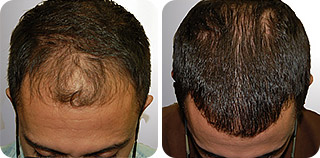 Mr. H A, Aged 28After 11 Months
Mr. H A, Aged 28After 11 MonthsI had dandruff since the beginning of the time, and unfortunately, in the past years, hair loss was added to it, and the front part of my head was out of hair. After treatment, dandruff and hair loss were wholly gone, and hair on the front part of my head started to grow again.
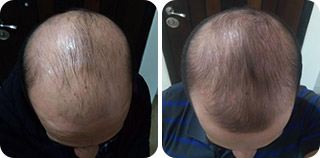 Mr. M S, Aged 35After 6 Months
Mr. M S, Aged 35After 6 MonthsAs you can see in my photo, I lost almost all my hair. After 6 months with Dr. Nasirzadeh's program, a lot of thin hair is growing on my head. I am very happy and hope that more hair will grow as I continue my treatment. Thanks to Dr. Nasirzadeh.
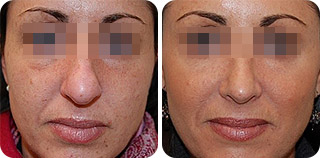 Ms. M A, Aged 42After 3 Months
Ms. M A, Aged 42After 3 MonthsWith Dr. Nasirzadeh’s recommendation, first, I did a blood test then I got my program. He advised me some supplements, creams and solutions. The spots on my face have faded, the puff under my eyes are also gone and in general, my skin is younger and brighter. I’m completely satisfied with the treatment.
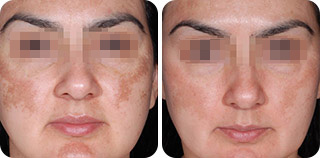 Ms. Zh K, Aged 29After 3 Months
Ms. Zh K, Aged 29After 3 MonthsThe supplements and creams that Dr. Danial recommended to me had a great effect on my skin, I’m satisfied with the result and I will complete my treatment with him for the desired result. Special thanks, doctor.
 Ms. J, Aged 27After 3 Months
Ms. J, Aged 27After 3 MonthsA friend of mine introduced Dr. Nasirzadeh to me. Some blood tests were needed to begin the program, and I sent him the blood test reports. He sent me a program that included two supplements, one multivitamin and the herbal Breast Enhancement, also a moisturizer to prevent skin cracks. I was advised to take them for 3 to 4 months until my breasts reached the desired size. I am now at the end of the third month. My breasts have become bigger and are in better shape.
 Ms. Z, Aged 25After 3 Months
Ms. Z, Aged 25After 3 MonthsDr. Nasirzadeh gave me a great program. One cream and two supplements recommended based on the results of hormonal tests. The result was what I wanted and I'm glad that I was under his treatment.
 Mr. E J, Aged 34
Mr. E J, Aged 34I had chronic sinusitis for many years, and I had to take antibiotics for that. My problem always recurred in the cold season, and it was never completely resolved until I started treatment with Dr. Nasirzadeh. My program included a number of supplements and recommendations that after a few weeks not only completely cured my sinusitis but also increased my energy level. Thank you from the bottom of my heart, Dr. Nasirzadeh
 Ms. R Y, Aged 32
Ms. R Y, Aged 32I got mild Covid-19 and isolated myself at home. I felt very tired, and my body ached, so I took an online program from Dr. Nasirzadeh to boost my immune system. After three days, I feel better, and the dizziness and other symptoms have decreased. I also took two separate programs for my parents to strengthen their immune system too.
